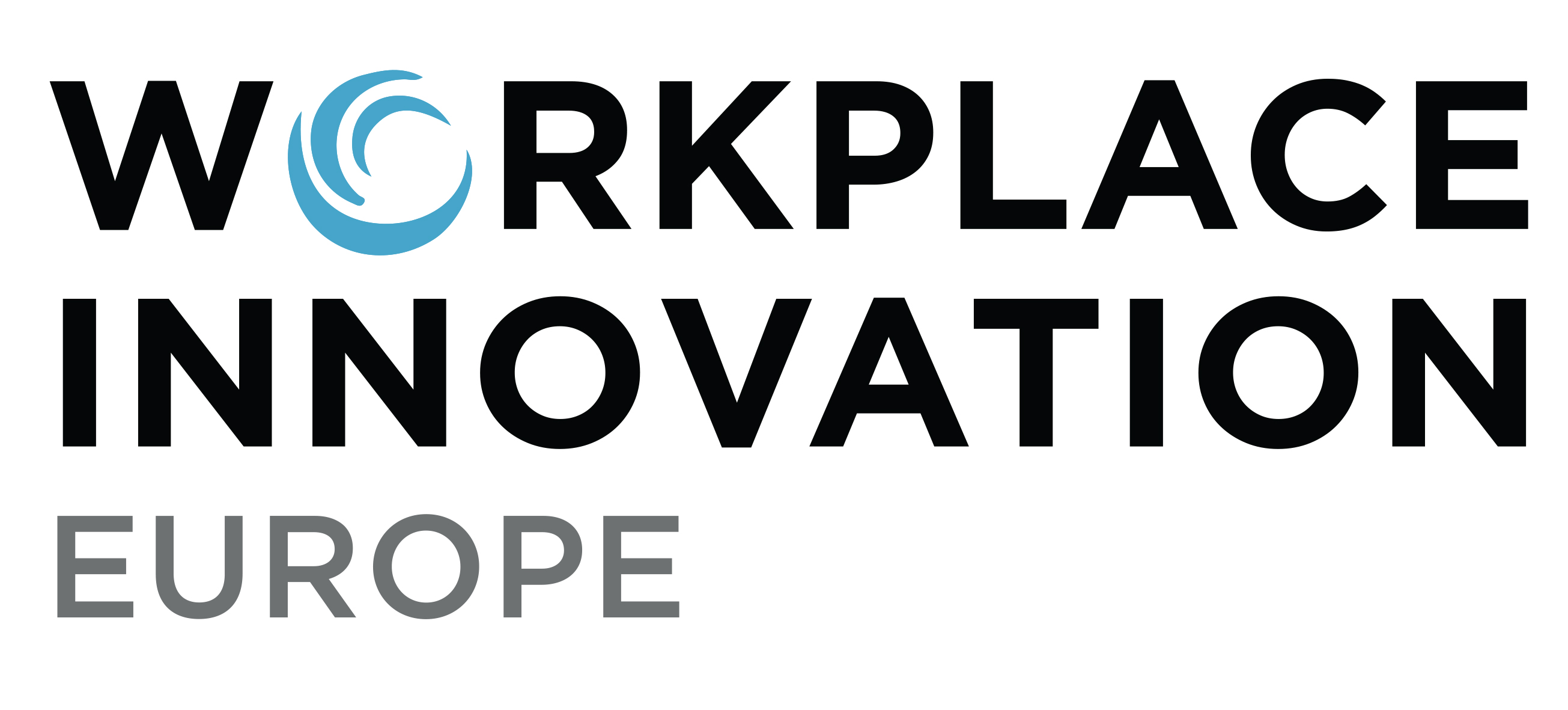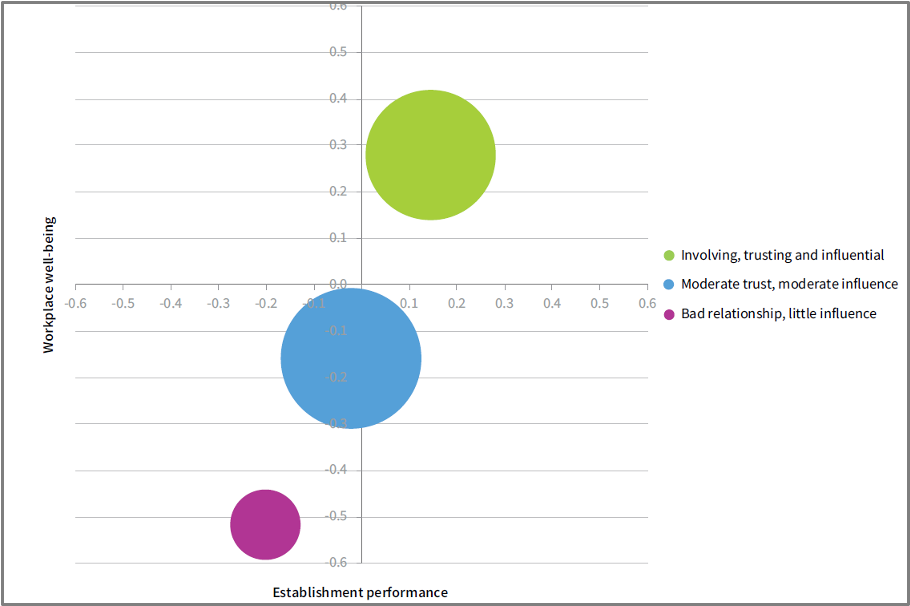What is so important about Employee Voice?
Engaging employee knowledge and ideas means more effective decisions and stronger engagement
Over the past two weeks, we’ve reviewed some of the evidence around direct employee participation, including the ability of workers to exercise autonomy and choice in how they work, and their ability to influence management decisions. Research and practice alike show that giving employees more control over how they do their jobs, and greater input into decisions that affect their work, lead to win-win outcomes in terms of business performance.
The chart is measuring the impact of ‘social dialogue’, including both trade union-management forums or non-union employee representation. Impact is measured on business performance (profitability, output and employment) in the vertical axis and workplace wellbeing (management behaviour, motivation, sickness absence and retention) on the horizontal axis.
Organisations in which management and employee representatives meet regularly in an atmosphere of openness and trust, supported by effective two-way communication, are strongly associated with positive outcomes for both business performance and wellbeing – in sharp contrast to those where there is little or no employee influence.
In many ways this is unsurprising
As we argued in our earlier article about employee influence on management, shared decision-making brings the widest possible range of knowledge and experience to solving problems and realising new opportunities. And when decisions are jointly owned by managers and their teams, both sides share a common understanding of current goals and strategic priorities.
Where employee forums stimulate a continual flow of ideas and feedback from the frontline, we find particular benefits in terms of productivity improvements, wellbeing and engagement.
On the other hand, there is plenty of evidence to show that lack of employee voice is associated with disengagement and misalignment with company vision and strategy.
Size matters
Now look at the size of the respective dots. In the UK, for example, organisations with high trust where employee voice is influential account for only 40% of workplaces, pointing to enormous untapped potential for gains in both performance and wellbeing.
But it’s not straightforward
Of course, as the blue dot suggests, many more workplaces are somewhere on the journey from top-down to collaborative decision-making. They may have introduced some form of employee forum – but with limited impact. And at worst, ineffective forums can disengage employees even further.
We’ve been working with an organisation that introduced such a forum some time ago, with the aim of channelling staff ideas for improvement and providing a bridge between the senior team and the frontline. The problem is that senior management hadn’t engaged with the forum effectively, showing reluctance to engage representatives in addressing key challenges or realising strategic goals. Staff representatives were left to devise useful but essentially marginal initiatives, many of which failed to gain management support. Morale was understandably low. Forums will undoubtedly fail in the absence of openness and trust.
What does good look like?
Bringing employee representatives together requires careful thought and preparation. You need to anticipate potential anxiety, lack of confidence and scepticism.
People have to feel confident that they can speak openly and without fear of recrimination. An important rule for successful dialogue is that ‘the best argument wins, no matter who makes it’, and it’s worth adopting this as the forum’s guiding principle.
Honest and open feedback from frontline employees can make uncomfortable listening for senior teams, and the temptation to challenge its authenticity may be strong. Effective listening and constructive questioning are vital skills for management representatives to acquire.
The table below suggests some guidelines for successful forums, and you can always contact us for a free, no obligation discussion if you’d like to know more.
Successful partnership forums . . .
- Support employee representatives. Make the role attractive by giving reps sufficient time and resources to do the properly – rather than letting it become a burden that they must carry in their own time.
- Train together to acquire the knowledge and skills to make the forum effective and sustainable.
- Define ground rules and apply them consistently. Here is an example from a partnership forum:
- This is a two-way process
- Share ideas and information rather than give advice
- Be prepared to listen to criticism of yourself
- Acknowledge past mistakes
- Make all comments constructive
- Use evidence to support an assertion
- Keep calm and don’t shout.
- Start and finish at the bottom. Employee representatives need times and spaces to engage colleagues in reflection and dialogue about work issues, including forthcoming challenges, corporate policies and their ideas for improvement. They also need to bring issues from the forum back to employees. Access to team meetings, whiteboards and other resources is invaluable. Without this bridge to the whole workforce, partnership forums soon become stale.
- Identify objectives and boundaries. Be clear about how the forum fits in with the organisation’s decision-making structure and define its remit.
- Be imaginative. Have fun, be creative and never let meetings become boring.
- Find quick wins to show everyone that it’s working. But demonstrate that you can also tackle sticky issues together.
- Don’t put ‘tea and toilets’ on the agenda. Partnership forums can be locked into endless discussions about minor issues that are better resolved elsewhere.
- Understand the difference between boxing and dancing. Some issues may still give rise to adversarial bargaining between management and employee representatives, but the partnership forum isn’t the place to do it. Save contentious issues for another type of meeting and focus on potential win-win outcomes.
- Learn from others. Establish contact with other organisations trying different ways of making partnership work through Fresh Thinking Labs.
- Anticipate setbacks. It is highly unlikely that partnership working will always run smoothly. Change is a messy and if you find that initial enthusiasm and excitement begin to wane, recognise that this is common. If, at the start of the process, you anticipate that you will encounter obstacles and disappointments you will be better prepared to deal with them.
- Communicate, communicate, communicate. Celebrate successes, keep everyone informed about logjams and explain failures.
- Plan for succession. Avoid collapse when key people leave the organisation. Don’t let it just become ‘the usual suspects’.
Time to act
Becoming an employer of choice means going beyond the gloss and taking a hard look at what really matters. Our free Guide to Workplace Innovation and Short Diagnostic are a good place to start, or contact us today for a free, no obligation one-hour consultation.




